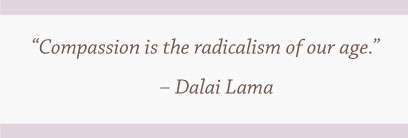What is Nonviolent Communication?
History: Nonviolent Communication is also called Compassionate Communication. It was developed by Dr. Marshall Rosenberg who grew up surrounded by both inflammatory social situations and profoundly compassionate relationships. He asked himself: Why this discrepancy? Why is it that some persons wish to do harm to one another, while others enjoy giving to one another?
From his studies and investigations into human nature, Dr. Rosenberg concluded that it is basic to human nature to enjoy compassionate giving. He postulated that incendiary human encounters are due to fear fostered by faulty education and self-perpetuating circumstances. Once human beings understand that they can get their needs met through the method of Nonviolent Communication, conflict is transformed into understanding and positive strategies.
Name: The term, “nonviolence” was coined during the Ghandian and Civil Rights movement. It implies the absence of violence in thought and deed. We may be unhappy with the actions of another human being, yet we wish for the well-being of this person even when we are in opposing positions. Nonviolent Communication allows for all persons to attend to what is most important to them.
Process: The process of Nonviolent Communication involves honest expression of what is alive and vital within us. In order to be clear in our sharing with others what is important to us, we need to first become clear about what we are feeling and wishing for, what we value and need. This inner clarity also prepares us to hear without judgment and evaluation what is important to the other person(s) in the conversation. Anger, fear and pain are replaced with understanding and peace of mind. Through Nonviolent Communication we avoid unnecessary conflict, formulate workable strategies, and generate a basis for a deeper connection with others and ourselves.

